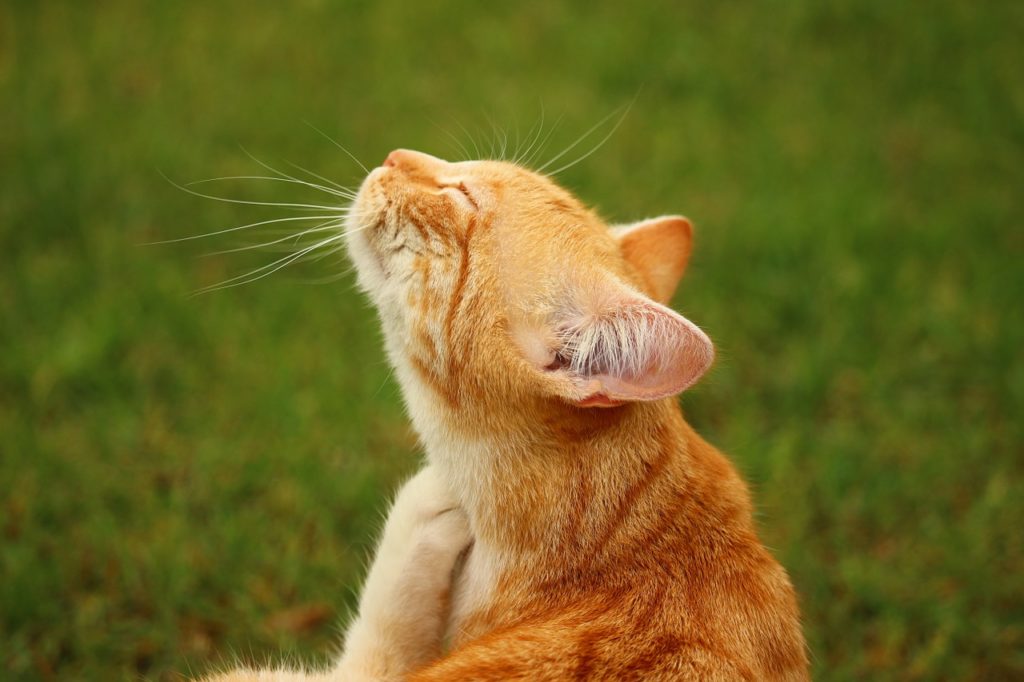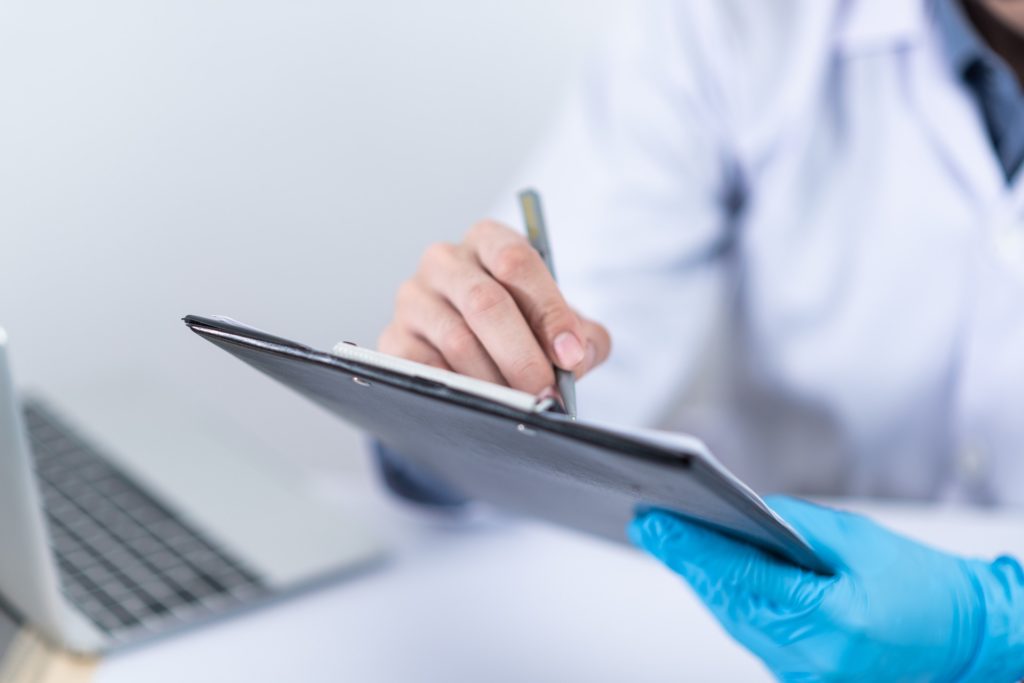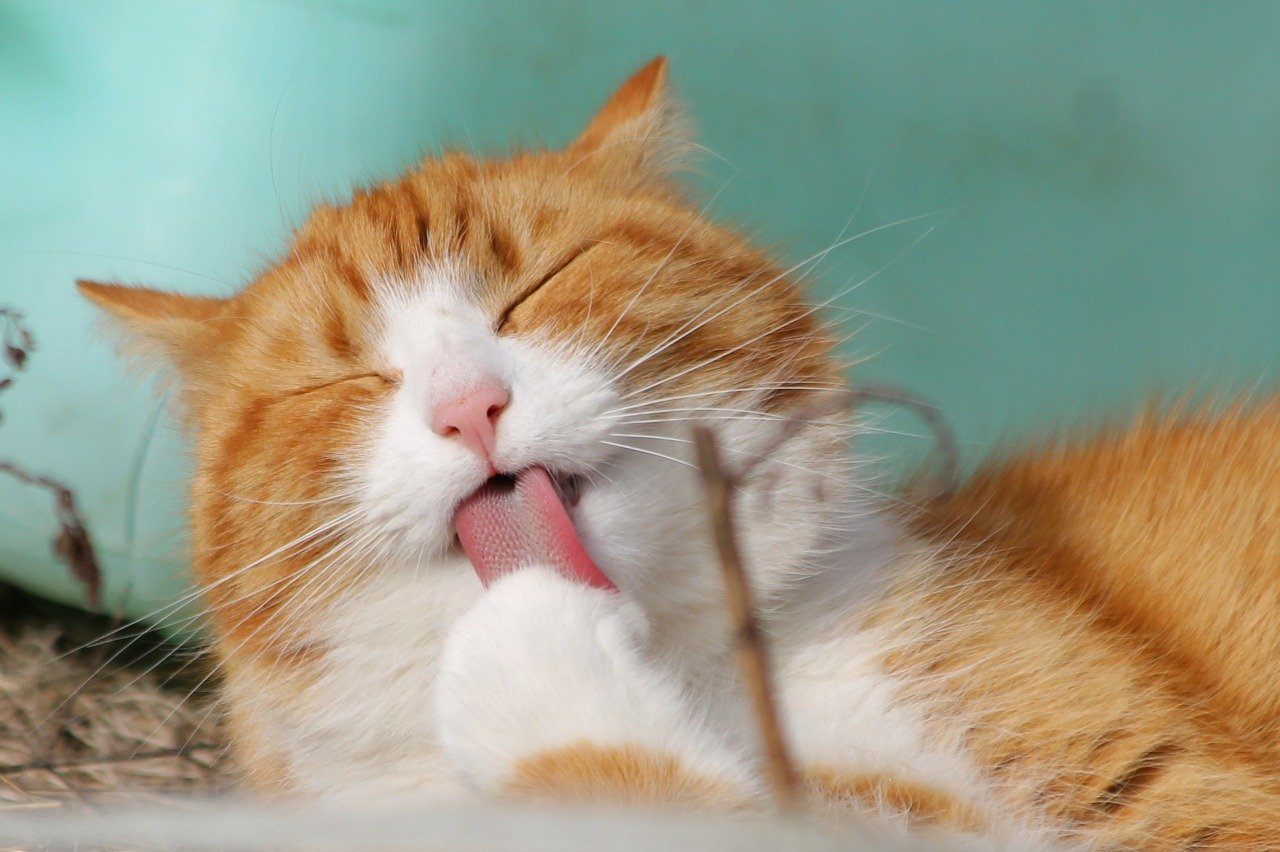Flea treatments for cats can come in many forms, and many of them are applied topically. This generally wouldn’t be a problem, but cats will be cats. They will probably lick the flea treatment you have applied. So, should you be concerned if your cat licks their flea treatment?
The Dangers of cat licking their flea treatment
Flea treatments have a lot of active ingredients in them that can be dangerous if your cat licks and ingests them. Cats are very likely to lick their own flea treatments and will often lick other cats, and this can result in flea treatment toxicity.
To make it worse, cats are also more sensitive to these active ingredients compared to dogs.
Products with pyrethrin
Flea treatments for cats are often pyrethrin-based, meaning they use pyrethrin as one of their main active ingredients. They are generally safe to use, but a cat who has ingested them can experience excessive salivation and muscle tremors.
Products with organophosphates
Another set of active ingredients you often find in flea treatments is organophosphates. They are the products with chlorpyrifos, diazinon, dichlorvos, haloxon, malathion, phosmet, or tetrachlorvinphos in their labels. They are more dangerous to your cat when ingested. Your cat can experience diarrhea, difficulty in breathing, lethargy, and vomiting.
Organophosphate toxicity can be fatal, especially when the active ingredients ingested are significant.

Common ways cats ingest flea treatment
Your cat can lick her flea treatment in three general ways. She can directly lick the flea treatment from where you have applied it topically, from an object that has been smeared by it, or from another cat in your household who is undergoing the same treatment.
- Direct ingestion. Cats can be curious or unimpressed. Curious cats will lick the flea treatment you have applied to know what it is. Unimpressed cats will lick the flea treatment away because they don’t like it. It doesn’t help that some cats are very flexible. They may be able to lick parts of their bodies that are supposed to be inaccessible.
- Indirect ingestion. Cats can lick their flea treatment without being fully aware of it. For example, they can scratch their neck and then lick their paws, indirectly ingesting the flea treatment their owners have applied on their necks.
- Third-party ingestion. Third-party ingestion happens when your cat licks flea treatment from another pet in your household. This can be a serious problem in households where more than one pet is being treated for fleas.
To avoid any of these from happening, it’s important to follow the instructions of your veterinarian and the labels on the flea treatment’s packaging. As much as possible, supervise your cat until the flea treatment has dried on her body to minimize the risk of licking and ingesting the product. Also, separate pets who are undergoing flea treatment to avoid third-party ingestion.
What to do when cats ingest flea treatment
Depending on the active ingredients, dosage, and physical traits of your cat, flea treatment toxicity can be quickly fatal. But you may also save your cat if you can take her immediately to the veterinarian. She may even have a full recovery.
- Look out for symptoms. When you are treating your cat of fleas, always be on the lookout for the symptoms of flea treatment toxicity, such as diarrhea, excessive salivation, lethargy, and vomiting. Also, observe if there are any behavioral changes, such as aggression or seclusion.
- Give your cats a tasty snack. Flea treatments are bitter. Your cat may react negatively to the taste, not just to the toxicity. Give your cat a snack to make her drink water afterward or just flush her mouth with water directly.
- Seek medical attention. Your veterinarian will know how to treat the specific case of your cat. Make sure to bring your cat to the professional. Your cat may need to be hospitalized, or at the very least, she may need extra care at home.

Do’s and don’ts of cat flea treatment
The worst part about fleas is that they don’t stay on your pets. They can spread across your home, including your bed. It’s important to really get rid of the fleas of your cat. But the process doesn’t have to be dangerous.
Do’s
- Consult a veterinarian. Sure, there are over-the-counter flea treatments you can try. But seriously consider going to the veterinarian instead. The professional will be able to properly diagnose your cat’s condition and prescribe the appropriate treatment, which can be more effective than the generalist flea treatments you can buy over-the-counter.
- Follow the flea treatment instructions diligently. Some pet lovers simply apply the medication and expect results without reading the instructions. If you don’t follow the instructions from your veterinarian or the label of the flea treatment’s packaging, the product can become ineffective and unsafe.
- Separate pets being treated for fleas. Avoid third-party ingestion by separating pets who are undergoing flea treatment. This is especially true if the other pets being treated are dogs because their flea treatments have different formulations and are more dangerous when ingested by your cat.
Don’ts
- Don’t disregard flea treatment toxicity. Flea treatment toxicity is real and it is fatal if it is severe enough. When treating pets of fleas, always keep flea treatment toxicity in mind to minimize risk.
- Don’t use more than one flea treatment on your pets unless instructed by a professional. Different flea treatments have different active ingredients and different ways of getting rid of fleas. But many of them are also the same. You may be subjecting your cat to the same active ingredients and building up toxicity.
- Don’t use dog flea treatment on your cats. Dog flea treatments have different formulations. They have ingredients that your cat can’t properly process. This may result in sickness or even death.
You should be concerned if your cat licks her flea treatment
If your cat licks her flea treatment, you should be concerned because of the risk of flea treatment toxicity. This can be a major health risk. It can also be fatal, especially if your cat doesn’t receive the necessary medical attention.

